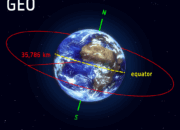The fate of Earth, as an increasingly intricate nexus of geological, biological, and astronomical phenomena, hinges critically upon the lifecycle of our Sun. Approximately five billion years from now, the Sun is poised to exhaust its nuclear fuel, consequently embarking upon a transformation that will culminate in the extinction of Earth as we know it. This eventuality, while seemingly distant, provides a unique lens through which to explore the broader implications of stellar evolution.
Initially, it is pivotal to grasp the lifecycle of the Sun, classified as a G-type main-sequence star, or G dwarf. This classification indicates that it primarily fuses hydrogen into helium within its core. Over the eons, the continual consumption of hydrogen expedites nuclear reactions, releasing energy that generates the luminosity essential for life on Earth. However, as hydrogen reserves begin to dwindle, the Sun will unavoidably transition into the subsequent phases of its evolutionary timeline.
First, the Sun’s core will contract under gravitational forces as the hydrogen fuel becomes increasingly scarce. This contraction will instigate a rise in core temperature, ultimately triggering the fusion of helium into heavier elements such as carbon and oxygen. The onset of helium burning represents a profound evolutionary milestone for the Sun. As a consequence, the Sun will experience an exponential increase in size and luminosity, transforming into what is known as a red giant.
As the Sun swells, its outer layers will extend to encompass the orbits of Mercury and Venus, and possibly even reaching Earth. Consequently, the surface temperature will escalate dramatically, rendering the planet inhospitable. Water bodies will evaporate, leading to the complete desiccation of Earth’s surface. This thermal cataclysm will obliterate any remnants of current ecosystem dynamics that sustain life, culminating in a stark, lifeless wasteland.
In addition to these environmental changes, the hydrogen shell burning that occurs around the core will contribute to the further inflation of the Sun. With time, the intense gravitational pull of the Sun will eventually destabilize its outer structure. The dramatic shedding of outer layers will emit vast amounts of solar wind and radiation into space, culminating in a planetary nebula, a phenomenon that marks the concluding phases of stellar evolution for a star of this type.
Earth’s fate is inexorably tied to these cataclysmic changes. The loss of atmospheric conditions conducive to life, paltry remnants of surface water, and the obliteration of ecological niches will render Earth uninhabitable long before the Sun reaches its red giant phase. Nevertheless, the implications of the Sun’s death transcend mere planetary conditions. They resonate deeply within the domains of astrophysics and cosmology, propelling inquiries into the future of the solar system as a cohesive unit.
In examining the solar system’s outlook during and after the Sun’s transformation, one cannot ignore the fate of the outer planets and their celestial companions. Gas giants such as Jupiter and Saturn will undergo profound changes in their orbits as the Sun loses mass. The diminishing gravitational pull from the Sun will instigate shifts in the orbital dynamics of these planets, resulting in a more chaotic cosmic ballet, where interactions among celestial bodies may lead to unforeseen outcomes, including collisions or ejections from the solar system.
The eventual remnant of the Sun, a white dwarf, will represent a stark departure from its initial splendor. This stellar remnant will consist primarily of carbon and oxygen, possessing a mass comparable to the Sun yet enveloped in a volume akin to that of Earth. As the white dwarf cools over billions of years, it will steadily dim, casting Earth into profound darkness. This remnant phase emphasizes concepts of stellar evolution and thermodynamics, revealing intricate relationships between mass, luminosity, and lifecycle stages of stars.
Moreover, the death of the Sun poses profound questions regarding the long-term viability of life itself. Despite the ephemeral perspective of humanity, the extinction caused by the Sun’s demise invites thought on the concept of cosmic inevitability. Are there alternatives, solutions, or potential escape routes for intelligent life? Astrobiological inquiries arise: could humanity or its descendants migrate to exoplanets orbiting other stars? Thus, through the lens of interstellar travel, we consider the plausibility of colonizing distant worlds, taking into account technological advancements and bioengineering developments that could facilitate such an endeavor.
In presenting the eventuality of Earth’s demise in concert with the Sun’s death, an overarching theme surfaces: the transitory nature of existence. This intricate interrelation between cosmic bodies asserts a relationship governed by the laws of physics, where creation and destruction form a continuous loop. The study of such dynamics serves to deepen our comprehension of the cosmos and our place within it, reminding us of the remarkable fragility and preciousness of life.
In conclusion, while Earth faces an irrevocable fate in roughly five billion years, this eventuality invites reflection on our current understanding of stellar evolution, planetary dynamics, and the future of life beyond our home planet. The Sun’s life and death encapsulate a narrative that extends beyond human existence, intertwining the destinies of myriad celestial entities within the grand tapestry of the universe. The insights garnered from such exploration will be indispensable as we strive to unlock the mysteries surrounding our cosmic neighborhood in the vast expanse of the cosmos.












